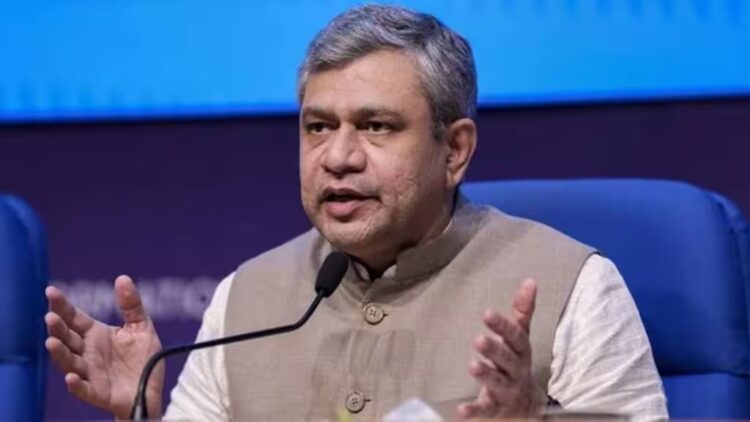According to Ashwini Vaishnaw, the first chip from Tata’s Dholera factory would be available in December 2026
The first batch of semiconductors will leave the Tata Electronics facility in this area in December 2026, Ashwini Vaishnaw, the government minister for IT and communications, said on Wednesday. During the groundbreaking ceremony for the Tata Group and CG Power chip factories, Vaishnaw predicted that by 2029, India will rank among the top five chip ecosystems globally.The minister said, “The first chip from the Dholera plant will be out in December 2026, and the chip from the Micron plant will be out by December 2024.” Chips at 28, 50, and 55 nm nodes would be produced at Tata’s Dholera factory, he added.

Three chip factories totaling Rs 1.26 lakh crore were inaugurated on Wednesday by Prime Minister Narendra Modi. Tata Electronics is the owner of two of the facilities, while CG Power is the third. Among the three factories is Tata Electronics’ first high-tech chip manufacturing facility in the nation, which it is establishing in Dholera’s special industrial district in collaboration with Taiwan’s Powerchip Semiconductor Manufacturing Corp.
With an expenditure of Rs 91,000 crore, the factory would be able to generate 50,000 wafers every month. On a pari passu basis, the Center will contribute 50% of the capital expenditure. Power management chips for electric vehicles (EVs), telecom, defense, automotive, consumer electronics, display, and power electronics are just a few of the industries that these cutting-edge technology-driven chips will serve.
Semiconductor is a “foundational” business that powers almost every device in existence, including trains, vehicles, refrigerators, air conditioners, and airplanes.The PM also dedicated a new Tata Electronics assembly and testing plant in Jagiroad, Assam.With a projected construction cost of Rs 27,000 crore, Tata’s Assam plant is estimated to create over 27,000 direct and indirect employment in the area.
Interestingly, this will be the first semiconductor plant in the Northeast from India. With a 48 million chip per day capability, Tata Semiconductor Assembly and Test (TSAT) will develop domestic advanced semiconductor packaging technologies, such as flip chip and ISIP (integrated system in package) technologies.
These would primarily target the automobile, electric vehicle, consumer electronics, mobile phone, and telecom sectors.At a cost of Rs 7,600 crore, PM also lay the groundwork for CG Power’s semiconductor factory, which it is building in Sanand, Gujarat, in collaboration with Renesas Electronics Corp. and Stars Microelectronics of Thailand.
Renesas is a well-known semiconductor manufacturer that specializes in customized chips. It is a major player in microcontrollers, analogue, power, and system-on-chip products and has 12 semiconductor factories.The factory will produce chips for consumer, industrial, automotive, and power applications with a daily capacity of 15 million chips.
According to Vaishnaw, attempts have been made since 1962 to establish a semiconductor sector in India, but things are presently going well.According to him, the establishment of three major semiconductor projects sets a global record.The groundbreaking ceremony was held 15 days after the Center approved the proposal. By 2029, Vaishnaw predicted, India’s semiconductor ecosystem will rank among the top five.
According to N Chandrasekaran, chairman of Tata Sons, the semiconductor initiatives of Tata Electronics would initially generate 50,000 direct and indirect employment. According to him, production at the Assam factory is anticipated to begin prior to that of the Dholera fabrication unit.







